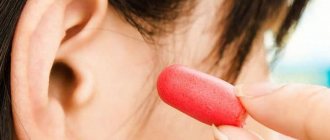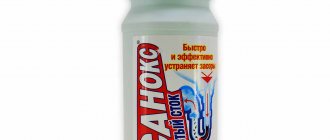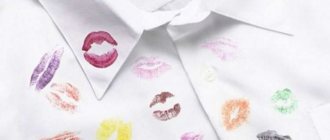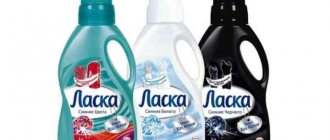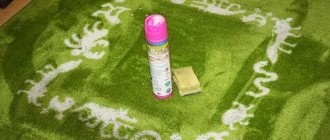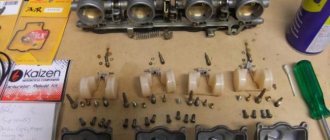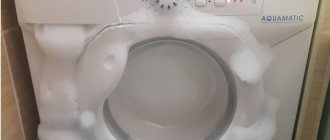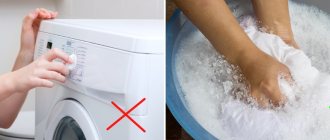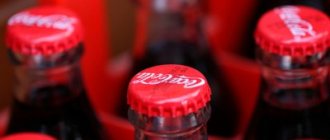Scientists have proven the harm from frequent consumption of Coca-Cola - it is better not to rinse your own stomach with the acids that are part of it. However, enterprising Russians have turned the popular drink into an effective cleaning product that can cope with complex stains just as well as other chemicals. Metal and glassware, plumbing fixtures, old gold and silver - this is not all that can be washed with regular cola.
How it works?
Many people are interested in the question of what is contained in cola that allows it to effectively deal with rust and limescale. The fact is that the drink contains a large amount of phosphoric and citric acids. Due to the huge amount of sugar, the sour taste is almost unnoticeable, but the level of acidity of soda is comparable to 3% vinegar essence, which is so often used as a cleanser.
A solution of citric, acetic or malic acid will clean a contaminated surface no worse than Coca-Cola, because the pH of these liquids is the same. But it’s expensive to clean plumbing fixtures or clothes with natural apple or lemon juice, and vinegar essence smells unpleasant. Perhaps the only worthy alternative to cola is citric acid, which is inexpensive and has no specific odor.
Soda as a cleaning agent: expensive and not very effective
Despite the fact that cola does indeed successfully function as a cleaning agent, it is not very wise to use it as a household chemical.
The authors of the “MythBusters” program on the Discovery Channel at one time specifically conducted experiments, testing the effectiveness of Coca-Cola in cleaning, and came to the conclusion that the drink does indeed have cleaning properties, but its effectiveness is still significantly lower than from specialized means. And this is understandable: after all, the content of the drink is extremely small. By the way, it is no coincidence that all “folk methods” of using cola involve very long contact with the drink - the chemical effect takes time.
The cost of a bottle of soda is comparable to the cost of a bottle of specialized household chemicals, which will last for a long time. At the same time, drinks, in addition to cleaning additives, also contain a lot of ingredients that are unnecessary for a cleaning product - such as sweeteners or food coloring.
And fans of home remedies can use solutions of food acids - for example, acetic or citric - instead of soda. Or wipe the stains with half a lemon - the concentration of citric acid in lemon juice is much higher, so the cleaning effect will be much more noticeable. It is both more environmentally friendly and much cheaper.
How to clean a bathtub with Coca-Cola?
You can see the wonderful effect of soda when cleaning the bathroom. Cola will clean the bathtub, toilet, sink and tiles equally well.
To get a sparkling clean toilet, you need to pour ½ liter of cola into the drain hole for 1 hour (before this, you should remove the water in it - using an empty shampoo tube or simply vigorously poking the drain with a brush). If possible, it is better to wait longer until the acid completely dissolves the hard plaque. Then you need to clean the toilet as usual. Along with the dirt, the unpleasant odor will also disappear - after cleaning the bathroom will smell like cola.
To clean the bathtub and sink, simply pour a carbonated drink over their internal surfaces and wipe with a damp cloth after 5-10 minutes.
If rusty smudges or stains from salt and lime appear on a tiled wall or floor, Coca-Cola can easily deal with them. You just need to pour the “life-giving” drink into a small container and, dipping a napkin, rub the contaminated area.
Many cleaning products contain chlorine, which irritates the respiratory tract. Cola has a pleasant aroma and does not emit harmful substances, so it is an excellent option for allergy sufferers.
Types of bath contamination
In order to choose the right product to effectively clean the surface of the bathtub, it is necessary to distinguish which substances and conditions caused the formation of dirty deposits.
The main culprits that cause bathtubs to lose their snow-white appearance over time can be listed according to the amount of damage caused and the difficulties encountered in trying to clean the enamel or acrylic:
- House dust and salts dissolved in tap water. They account for up to 80% of all dirt and yellow plaque on the snow-white surface of the bath. It is almost impossible to clean the walls mechanically;
- Organic dirt, microflora present in water. A bath for microorganisms is the most attractive and convenient place to create a colony on the floor and walls of the bathroom;
- Fatty “traces”, this includes epithelium washed off from the skin and remnants of detergents, soaps, shampoos, due to which the bath does not change color, but at the same time becomes overgrown with an invisible waxy coating;
A simple inspection and an attempt to clean the plaque on the surface of the bathtub using a sponge or brush with hot purified water will help you figure out what is contaminating the bathtub and what means are easiest to remove the plaque without the risk of damaging the enamel or acrylic.
For your information! If the bath unexpectedly changes color, then before attempting to clean the surface of plaque, it is necessary to treat the wall seams and joints with a disinfectant against fungus.
Even if the walls of the bathtub are cleaned to a shine with some proprietary composition, traces and drops of detergent always remain on the seams. In the future, germs will migrate from the tiles and seams, and the bathtub will be repopulated with the newly cleaned parasites.
Yellow or gray-yellow plaque is formed due to the precipitation of calcium-magnesium salts and microparticles of iron oxides. But mineral dirt always combines with dust and detergent residues; this whole set penetrates deeply into micropores and becomes cemented.
A popular way to protect a bathtub involves installing a magnetic filter that retains most of the salts. The bathtub is protected from dust with ordinary polyethylene film. But you still need to regularly clean soapy dirt from the walls. In the absence of a hard, abrasive salt film and dirty-brown house dust, the walls of an acrylic bath can be cleaned in 10 minutes of work.
Does cola clean silver?
Silver items require cleaning from time to time. Cup holders and spoons, figurines and even decorative inserts in furniture sets become covered with dust, green deposits, and rust. Coca-Cola perfectly cleans silver, and when heated, it can remove any old stains.
For cleaning you will need ½ liter of soda and a deep metal container. To restore the shine and purity of silver products, you need to do the following work:
- pour cola into a container;
- put items that require cleaning there;
- place on a gas or electric stove;
- bring the liquid to a boil;
- boil for 5 minutes;
- remove the products and wait until they cool down;
- rinse in clean water;
- wipe dry with cotton cloth.
This is how you can easily and inexpensively remove any stains from silver items.
Removing other types of contaminants
In addition to salt deposits and rust, the bathtub often suffers from spilled dyes, disinfectants and even sealant, so you have to look for ways to clean the enamel in unusual situations.
How to clean a bathtub from potassium permanganate and brilliant green
Stains from spilled brilliant green and potassium permanganate are removed using hydrogen peroxide or bleach. Sometimes, to clean a stained area, you have to prepare a solution of peroxide and strong acetic acid.
An acrylic bathtub can be cleaned with a mixture of ammonia and vinegar; brilliant green can be washed or cleaned with liquid soap and a small amount of pipe cleaner.
How to clean a bathtub after renovation
After the renovation is completed, the bathtub is covered with a large amount of dust, so first of all, the enamel needs to be cleaned of dirt with a regular damp sponge. Mechanically, with a rag or even a vacuum cleaner, you need to remove sand and everything that remains inside the container.
After removing the dirt mechanically, a window and wall tile cleaner comes into play. The acrylic bathtub is soaped with dishwashing liquid and after an hour is filled with hot water. This way it is possible to clean 99% of all contaminants.
How to clean bathtub sealant
The choice of method by which traces of plumbing sealant can be removed depends on the nature of the silicone mass. Acetaldehyde-based materials can be easily cleaned with a mixture of alcohol, vinegar and hydrogen peroxide.
If the bathtub is stained with heat-resistant sealant, you should wait until the material has completely cured, and then clean it mechanically.
Cleaning rusty coins with cola
Thanks to phosphoric acid, which is part of cola, the liquid can be used to dissolve rust on coins, bumpers and car bodies, and other metal objects.
Coins are cleaned as follows: to give shine to old money, you need to place them in a can of soda for at least 12 hours. The acid will corrode solid dirt; all that remains is to wipe the coins dry with a rough cloth. If rust or dirty residue remains in some places, the procedure must be repeated.
There is another way to clean ancient coins using cola: the money is wrapped in a rag soaked in soda and left for several hours, after which the loose dirt is wiped off with a hard napkin.
Cleaning rust
Motorists have long been using Cola to remove rust not only from small parts, but also from the engine. It has also found its application in summer cottages. Thus, vigilant owners lubricate not only rusted nails and nuts with the drink, but also gate latches, garage hinges and other threaded connections. The application scheme is quite simple. To remove rust on non-removable metal parts, they are wrapped in a cloth or towel soaked in Cola. The removable ones are detached and soaked overnight in a magical drink.
How does Coca-Cola clean gold?
Gold jewelry with many curls, rings and bends is difficult to clean mechanically. But cola copes with this job “perfectly.” It is enough to collect all the contaminated products, put them in a glass and fill them with soda. After 12 hours, rinse the rings and earrings with cool water - and they will shine like new.
This cleaning method is not suitable for products with precious stones, since the color of the stone under the influence of cola can change beyond recognition. In addition, you need to be sure that the product is really gold and not gilded. Phosphoric acid will easily corrode gold plating and the jewelry will lose its attractive appearance.
The benefits of Coca-Cola as a drink are very questionable, but cola as a cleaning agent will give a head start to many other chemicals. If you have a bottle of cola in the refrigerator, you will always find something to clean your plumbing fixtures, metal objects, or clothes.
Modern cleaning chemicals
If you don’t have a proven and tested folk remedy at hand, with the help of which the bathtub has been kept in perfect condition for many years, then it is best to clean the walls using a branded ready-made product.
In practice, the best results in the fight for cleanliness were demonstrated by:
- Gel cleaning products – “CIF – Ultra Lite” and “Comet”. The bath sparkles; you need to clean the enamel at least once a week;
- Liquid “Domectos”, which has an antibacterial effect, but due to the high activity of the product, gloves must be used, and the bathtub must be rinsed with hot water at least three times after cleaning;
- "White", a weak aqueous solution of alkali metal perchlorates. In skillful hands, a bathtub can be cleaned no worse than expensive gels or pastes;
- Cleaning products based on powders and pastes. Soda allows you to clean very stubborn stains, but you should not overuse it or use it on soft acrylic, otherwise the bathtub will quickly lose its surface gloss.
Before using a branded detergent on a bathtub surface, it is important to test its capabilities on less valuable items, such as wall tiles. In this case, the traces can be used to determine how many times the surface needs to be washed off in order to completely clean the bathtub of chemical residues. It is simply impossible to see traces of detergent on light acrylic enamel.
How to clean a bathtub with Coca-Cola
So, Coca-Cola will be very useful when cleaning the house, since with its help you can:
- get rid of limescale on plumbing fixtures;
- remove rust;
- remove greasy stains from clothes or furniture.
Let's start with the most popular use of soda - cleaning plumbing from limescale.
Using Coca-Cola you can clean the toilet, sink, bathtub, and faucets. It is enough to pour a certain amount of brown water onto the contaminated surface and wipe it with a sponge or soft cloth.
Several advantages of this method:
- you can work without gloves;
- there is no unpleasant bleach smell that comes from most cleaning products;
- the solution will not damage the enamel, so it is also suitable for a new bath;
- There are no harmful fumes, so headaches or the need to work in a mask are excluded.
If we are dealing with a heavily dirty toilet, then pour a few glasses of water directly into it and lower the lid. After an hour, use a brush and remove any remaining plaque from the walls of the toilet. Also, this method of caring for plumbing can be considered the prevention of sewer blockages.
Read about traditional solutions for whitening a bathtub here:
We remove rust from plumbing fixtures and other metal objects.
In order to clean a bathtub from rust, it is not enough to simply wipe its surface with a sponge soaked in Coca-Cola (this is only suitable for removing limescale). So what should we do? Of course, you can fill the bathtub with soda, but this will be very unprofitable in terms of price, especially since there is another way. Soak a towel in Coca-Cola and place it on the bottom or sides of the tub so that it covers the rust. Leave for several hours. Periodically, you can additionally wet the towel.
If you need to clean rust from, for example, a faucet or its bolts, then simply place them in a glass of cola for several hours. “Magic water” will make your plumbing fixtures shine in a new way.
It is also quite possible to remove grease stains from clothes or furniture using Coca-Cola.
To do this, pour water directly onto the stain and leave the contaminated item in the sink for 2-3 minutes. Then, without rinsing, put it in the washing machine. The same method applies to cleaning rugs, curtains or sofa covers that have greasy stains on them.
As you can see, sometimes it’s enough to be a little creative and look at familiar things from a different angle. So water, which is harmful to health, can be a very useful product for caring for plumbing fixtures.
Removing stains from clothes
Coca-Cola is considered not only an effective, but also a cheap stain remover for clothes. To get rid of the stain, you need to pour the soda onto the stained area and give it time to absorb. After this, it is enough to wash the clothes in the usual way. This way you can get rid of even the most stubborn stains. When purchasing Coca-Cola, everyone must decide for themselves whether to drink it or not. After all, if it is able to cope with the problems listed above, then it is not difficult to guess what effect it has on the human body.
A common folk remedy for blockages
There are many ways to clean pipes using improvised means, but not all of them are effective. In general, traditional methods can be used if the blockage is not dense and the water leaves at least a little. In more advanced cases they are unlikely to help.
- How to clear a clogged bathtub with baking soda
From it you need to prepare a solution with water in a proportion of 100 grams per liter of water. You need to make several liters of this solution. This method can help, since baking soda creates an alkaline environment in which fat can more easily dissolve.
- Ammonia
It acts in much the same way as baking soda, creating an alkaline environment. This method can be used if the water passes very slowly, which means that most of it is retained and has time to react. You will need approximately 200 ml of a 10% ammonia solution, which you need to pour into the sink and cover the hole for half an hour with a damp cloth. After this time, you should pour 3-5 liters of boiling water down the drain and then thoroughly rinse the pipes with a stream of warm tap water.
- How to clear a clog with Coca Cola
You will need to pour 3-4 liters of Coca-Cola into the sewer hole, after which the blockage will most likely be cleared. This method can be used if there is practically no flow at all.
- Laundry soap
You need to grind 1-2 pieces of soap on a grater and fill them with hot water (3-4 liters). When the soap has completely dissolved, the resulting solution should be poured in half a liter portions at intervals of 20-30 minutes. This option takes a lot of time, but is very effective.
REFERENCE! If the blockage occurs due to foreign objects inside, then the methods listed will not help.
Polishing the enamel of a cast iron bathtub
If the bathtub does not have visible damage to the enamel, then gloss restoration is carried out using rutile-based polishing pastes. Before attempting to polish the enamel, the walls of the bathtub are rubbed with a paste based on Trilon B, ammonium bicarbonate and CMC.
The first polishing pass is performed without water, then you need to clean the abrasive, and further polishing is performed using a paste of quartz dust diluted in turpentine.
